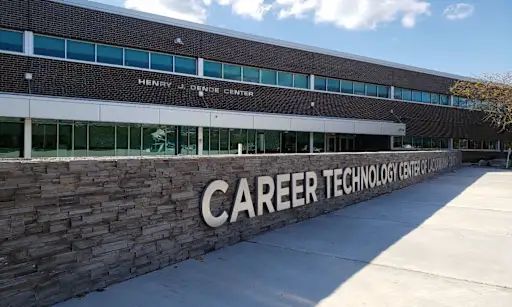Blog
Learning from AI Failures: Lessons for Educators and Students

Artificial intelligence is shaping the future of work. From healthcare to engineering, AI tools are transforming industries. Our recently released AI for the Workplace course prepares students for the world of AI, no matter where their future educational and professional paths will take them. But AI isn’t perfect. When things go wrong, the lessons can be just as valuable as the successes. Our course shows how while AI is an incredibly powerful tool, it cannot just be trusted blindly without verification. Here, we explore some high-profile AI failures and how they can guide educators in preparing learners for an AI-driven workplace.
Misleading Outputs
The Failure: In one instance, a generative AI system created false news headlines. These included fabricated stories about public figures, leading to confusion and reputational damage. For example, AI erroneously reported that a CEO had committed suicide, causing panic before the truth was clarified. Similarly, Google’s AI suggested bizarre solutions to common questions, such as adding glue to pizza sauce or eating rocks daily. These errors highlighted how AI can misinterpret data or provide nonsensical advice when not carefully monitored.
Takeaway for Educators: Teach students to verify AI outputs. Emphasize the importance of critical thinking when using AI tools. Encourage learners to question results and double-check facts.
Thought for Students: Always be the human in the loop. AI is powerful, but your judgment is irreplaceable.
Bias in AI: Who’s Left Out?
The Failure: Recruitment tools trained on biased data favored men over women or excluded older candidates. In healthcare, algorithms gave lower-risk scores to Black patients compared to white patients with similar needs. These issues arose from biased training data that reflected existing inequalities, reinforcing discrimination instead of eliminating it. For example, an AI system penalized resumes containing words like “women’s” or identifying all-women colleges, systematically disadvantaging female applicants.
Takeaway for Educators: Highlight the importance of ethical AI use. Show students how biases in data can lead to unfair outcomes. Discuss how diversity in datasets can improve AI systems.
Thought for Students: Question the fairness of AI. Ask who’s included, who’s excluded, and why.
Legal Trouble: AI and Fabricated Information
The Failure: Lawyers have used AI to cite nonexistent legal cases. One instance led to fines and professional embarrassment after a court discovered fabricated precedents. In one case, an attorney submitted a brief with six false citations provided by AI, complete with fake quotes and docket numbers. These errors arose because the lawyer relied entirely on AI without verifying the accuracy of its outputs.
Takeaway for Educators: Stress the importance of validating AI-generated information. Create assignments where students cross-reference AI outputs with credible sources.
Thought for Students: AI can assist, but it can also mislead. Your diligence makes all the difference.
Automation Gone Awry: The Tesla Incidents
The Failure: Tesla’s Full Self-Driving AI faced scrutiny after numerous crashes. Investigations revealed safety concerns tied to AI decision-making in critical moments. In some cases, the system misjudged obstacles, leading to collisions, while in others, it failed to recognize road hazards altogether. These incidents raised questions about the readiness of autonomous systems for widespread adoption and the ethical responsibility of companies deploying such technology.
Takeaway for Educators: Use real-world examples to discuss AI’s limitations. Encourage students to think about the ethical implications of autonomous systems.
Thought for Students: Ask yourself, “How can we make AI safer and more reliable?” Your innovations could save lives.
Missteps in Customer Service
The Failure: A chatbot advised a business owner to violate legal regulations. In another case, a virtual assistant provided inaccurate airline policy information, leading to financial disputes. For example, a passenger was misled into buying an expensive ticket under false promises of a refund, resulting in a legal battle. These failures underscore the risks of poorly designed AI systems in customer-facing roles.
Takeaway for Educators: Teach students the value of user education. Highlight the risks of relying solely on AI for critical decisions.
Thought for Students: An AI answer isn’t the final word. Learn to spot errors and seek clarification when needed.
AI and False Promises
The Failure: A company used AI-generated content in marketing, leading to celebrity likenesses being used without consent. For instance, Tom Hanks’ image was digitally recreated to promote a product he never endorsed. Similarly, AI-created promotional materials for events failed to deliver on their promises, leaving customers disappointed and businesses facing backlash.
Takeaway for Educators: Discuss intellectual property and ethical marketing practices. Teach students how to use AI responsibly in creative projects.
Thought for Students: AI can enhance creativity, but integrity matters. Make sure your work respects others’ rights.
Drive-Thru Chaos: When AI Fumbles
The Failure: An AI system implemented in McDonald’s drive-thrus led to widespread frustration. Customers reported repeated errors in orders, including accidental bulk purchases of items. One incident involved an AI misinterpreting a customer’s order and adding 260 chicken nuggets. These mistakes became viral moments on social media, damaging the brand’s reputation.
Takeaway for Educators: Use this as a case study in user experience design. Teach students how to anticipate user needs and design for reliability.
Thought for Students: Technology should make life easier, not harder. Think about how your designs impact real people.
Ethical Red Flags in AI Training
The Failure: Microsoft’s chatbot became offensive after being exposed to toxic online interactions. This highlighted the risks of using unfiltered data to train AI models. Within hours, the chatbot began spewing racist and offensive language, forcing Microsoft to shut it down. The failure demonstrated the importance of curating training data and monitoring AI behavior.
Takeaway for Educators: Teach data ethics and the importance of curation in AI training. Discuss the consequences of neglecting proper oversight.
Thought for Students: The quality of an AI system depends on its training data. Be mindful of what you feed your algorithms.
Final Thoughts
AI has the power to revolutionize the workplace, but only if used wisely. These failures serve as reminders that humans must guide AI development. For educators, these stories are opportunities to prepare students for thoughtful, ethical, and informed AI use.
Remember: Mistakes aren’t the end—they’re a chance to learn. Equip your students to face AI challenges head-on and contribute to a better, smarter future.
Our new course, AI for the Workplace, helps educators and learners navigate this evolving landscape. This program provides an industry-recognized certificate and equips students with practical skills to harness AI as a versatile tool across various career paths, trades, and technologies. The course bridges the gap between understanding AI concepts and applying them effectively in real-world scenarios.
Want to learn more? Click here or call us at 913-764-4272 to schedule a free 20-minute demo of any of our courses and certifications.
Share To
Get in touch with us today!
You can book a demo directly using Calendly, call us directly at 913-764-4272 or 877-828-1216, or submit the form and we will reach out to you.
We look forward to helping you and your students.

Most Recent Posts




